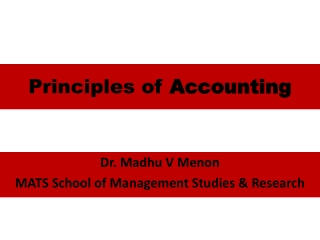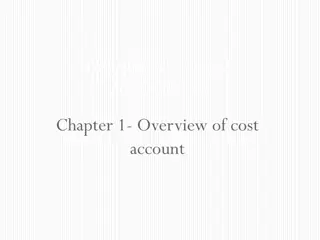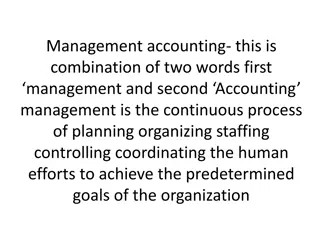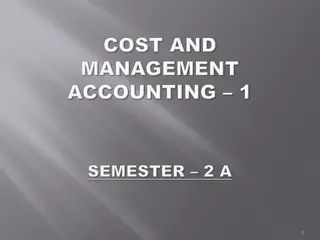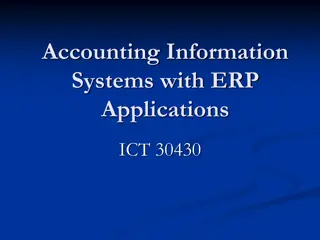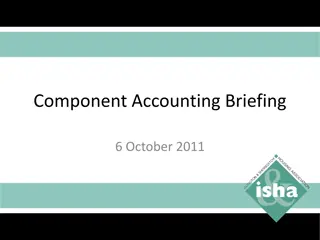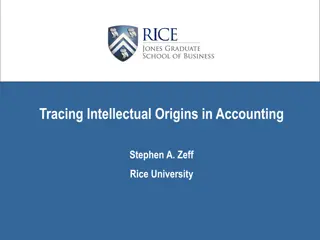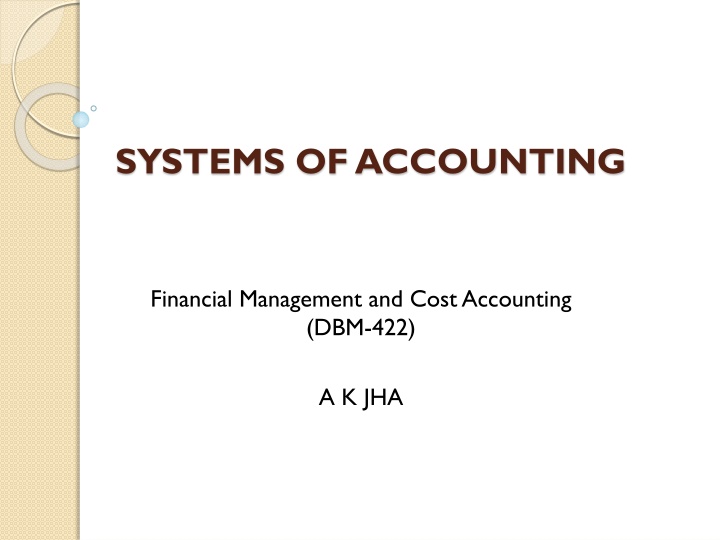
Double Entry Systems in Accounting
Explore the intricacies of double entry systems in accounting, including its development, principles, features, advantages, and disadvantages. Discover how this scientific method helps maintain accurate financial records and facilitates decision-making in organizations.
Download Presentation

Please find below an Image/Link to download the presentation.
The content on the website is provided AS IS for your information and personal use only. It may not be sold, licensed, or shared on other websites without obtaining consent from the author. If you encounter any issues during the download, it is possible that the publisher has removed the file from their server.
You are allowed to download the files provided on this website for personal or commercial use, subject to the condition that they are used lawfully. All files are the property of their respective owners.
The content on the website is provided AS IS for your information and personal use only. It may not be sold, licensed, or shared on other websites without obtaining consent from the author.
E N D
Presentation Transcript
SYSTEMS OF ACCOUNTING Financial Management and Cost Accounting (DBM-422) A K JHA
Systems of Accounting There are two systems of accounting: 1. Double Entry System and 2. Single Entry System
Systems of Accounting Double Entry System It was developed in the 15th Century by Lucas Pacioli. Under this system, every transaction has two aspects Debit and credit. While recording a transaction, it is recorded once on the debit side and again on the credit side.
Systems of Accounting Double Entry System contd.. It states that every financial transaction affects two accounts simultaneously and the effects on them are equal and opposite. For example, if a machine is purchased on cash, the transaction involves two aspects - receiving of machine and paying cash. In this case, the machine account increases but at the same time cash decreases by the same amount. Here, the receipt of machine is debited and payment of cash is credited. Double entry system is based on the principle that on a day, total amount debited is equal to the total amount credited.
Features of Double Entry System It maintains a complete record of each transaction. It considers the dual aspect of every transaction, viz. the aspect of receiving (value in) and the aspect of giving (value out). Following the rules of debit and credit, one aspect is debited and other is credited. The total of all debits always equals to total of all credits. It, thus, helps in ascertaining the financial accuracy while preparing a Trial Balance.
Advantages of the Double Entry System Scientific System that helps achieve the objectives of accounting. Like, maintaining business records, ascertaining profit or loss, ascertaining financial position, facilitating management and giving financial information to users Maintains complete record of transactions Helps establish accuracy of account Ascertain profit or loss Knowledge on financial position of the organization Possibility of comparative study Helps management in decision-making Mitigates chances of frauds and misappropriations
Disadvantages of Double Entry System Requires knowledge of Book Keeping Complex method Involves high cost Unsuitable for small business
Accounting Procedures Source documents like bills of purchases, sale s invoices, debit and credit notes, etc. are used to record transactions in the books of account. Entries are made in the chronological order in the books of original entry (Journal) applying the rules of debit and credit. Finally, the transactions recorded in the books of account are posted to the specific accounts maintained in the Ledger. What is anAccount? An account keeps systematic record of transactions pertaining to a specific head.
Accounting Procedures A given financial transaction has two aspects and it is bound to affect two concerned accounts. The entries in the given account are made in a T" account. It consists of two sides left side and right side. The left side is called debit side and the right side is called credit side. Making an entry on the left side of T-account is called debiting the account, and on the right side of T- account is called crediting the account.
T -Account (or Ledger) Dr Cr Date Particulars J.F.* Amount (Rs) Date Particulars J.F. Amount (Rs) *J.F. : Journal Folio (the page number of the journal where transaction is recorded) In double entry system, a given transaction affects two accounts simultaneously, of which one a/c is debited and the other a/c is credited. Debiting or crediting of an account depends upon the type of accounts and rules of debit and credit.
Types of Accounts There are three types of accounts: 1.Personal Accounts The accounts of all those persons, organizations / entities from whom the company has either to receive money or has to pay money. 2.Real Accounts The accounts that relate to tangible or intangible assets of the firm (excluding debtors). For example, land, building, plant and machinery, stock, cash etc. Intangible assets are goodwill, patent and trademark. 3.Nominal Accounts Accounts that relate to income and gain or expenses and loss of the firm are nominal accounts. For example, salary account, purchase/ sales account, commission received account, telephone bills account, etc. Similarly dividend received a/c. interest earned a/c, commission a/c are also nominal accounts.
Rules for Debit and Credit Type of Account Debit (Dr) Credit (Cr.) Personal Account The Receiver The Giver Real Account Debit what comes in. Credit what goes out Nominal Account Debit all expenses and losses Credit all incomes and Gains

